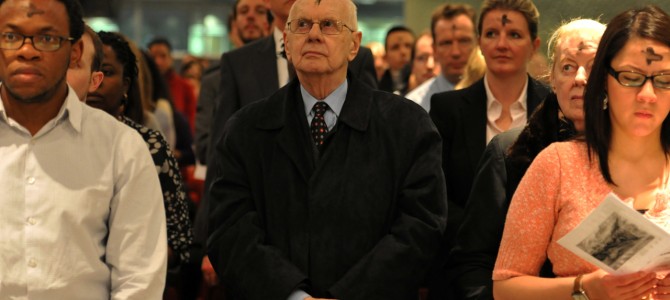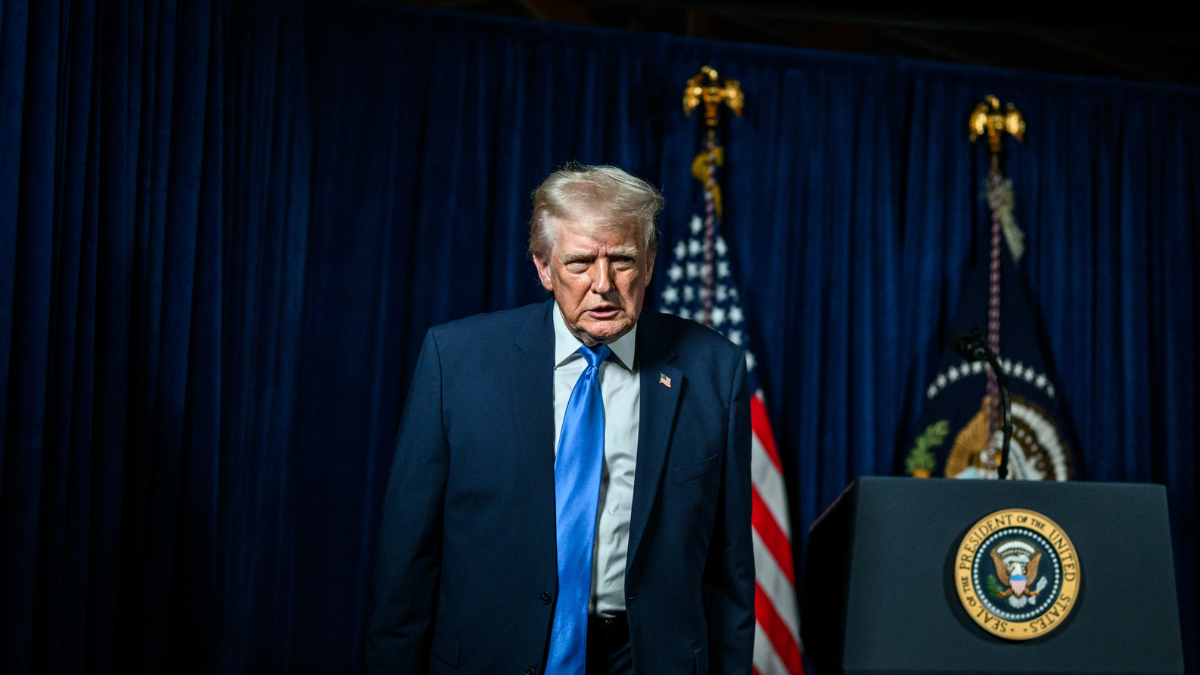
It is clear that prominent left-wingers and Democratic operatives think about the Catholic Church quite a lot—and they have some potent opinions on the subject. Last year we learned that George Soros dropped $600,000 on leftist Catholic front groups, trying to spin Pope Francis’ visit as a campaign tour for Hillary.
Last week it emerged that Clinton’s communications director, Jennifer Palmieri, agrees that Catholic terms of art such as “Thomistic thought” and “subsidiarity” are merely sophistical smoke screens for rich conservatives such as Rupert Murdoch, who are in search of a faith with “severely backward gender relations,” but too snobbish to join an evangelical church.
Not to be outdone, in a friendly email exchange with Hillary’s campaign chairman John Podesta, left-wing activist Sandy Newman described the Catholic Church as a “middle ages dictatorship” that needed a “Catholic spring.” (Would that be akin to the Arab Spring, and result in chaos, hangings, and the rise of a Catholic ISIS—perhaps named al-Chiesa?) To help with that, Podesta promised help to pro-choice sock puppet groups that call themselves “Catholic,” but push the Democrats’ agenda—you know, like those tribal “homelands” the apartheid South Africans set up in the 1980s and pretended were independent.
What Is This Organization Democrats Fear?
The Catholic Church is a lot like “Cats”: It has been around for what feels like forever, everyone has an opinion about it, it’s accustomed to stinging criticism, but it’s not going anywhere. Also, while its words are inspired, the music is terrible—at least it has been since Vatican II. As the author of a new book about the church, “The Politically Incorrect Guide to Catholicism,” let me offer a little insight to outsiders who might be wondering what this creature really is, and why it matters.
There’s an old story about a group of blind men who encounter an unknown creature, so they each decide to explore it the only way they can—by touch. One calls out that it is like a tree, another a snake, another a wall, still another a sail. It turns out that they have come across an elephant. The first man is hugging its leg, the second petting its trunk, the third pressing his nose against its torso, and the fourth man stroking its ear. Only by piecing their separate reports together can they determine the truth.
Or, if they were like modern liberals, they could dig in their heels and each insist on his point of view until the elephant got tired of being poked and prodded, and trampled them. The Catholic Church, likewise, eludes any single viewpoint, discipline, or ideology. For one thing, it is enormous—not merely in space but in time.
It embraces one-fifth of the whole human race, in every culture, far exceeding the reach of the Roman Empire. It has outlasted every human institution on earth, including the second-place contender, the Chinese Empire. The church has watched history unfolding, changed its course, and in turn has been changed itself. The six-continent bureaucracy that spends billions of dollars, runs thousands of hospitals and schools, and serves as a moral authority to more than a billion people would have been unrecognizable to the 11 terrified nebbishes who hid in the Upper Room the night before Pentecost.
But the next day, as Christians believe, the Holy Spirit touched them and set their souls alight, teaching them their mission was to the world at large. Those apostles, speaking to the world with absolute authority of the one who had created and redeemed it, would recognize the church today. They would call their mission accomplished. As if to underline the point about the universality of the Christian church, on Pentecost the apostles were fitted out with the kind of “universal translator” that TV writers would later invent for “Star Trek”: they spoke of Jesus and his resurrection from the dead in their native Aramaic, but the crowds heard the message in Latin, Greek, Syriac, Coptic, and even more obscure languages.
Because the church has been around for what seems to us forever and has left its fingerprints everywhere in our history and culture, it is natural that myths and misconceptions hang about it. Most contain a kernel of truth. The Catholic Church makes a long list of claims about its mission and has built a vast pyramid of assertions about the ultimate ends of life and the truths of human nature. To reject these claims or dispute these assertions is not to be anti-Catholic. It is simply to be non-Catholic.
To see the church as a conspiracy, or to trade in half-truths and propaganda about it, on the other hand, is something else entirely. We must sift out the difference between sharp, legitimate questions and ignorant, hostile smears, and dismantle some widespread, longstanding distortions concerning Catholicism that are reinforced by the media, and accepted even by many Catholics.
Eight Ways of Looking at a ‘Middle Ages Dictatorship’
There are people out there, including educated people, who believe that when you peel back the red velvet curtain, the Catholic Church is really:
- The Roman Empire in disguise, a hierarchical institution whose secret purpose has always been to keep poor people distracted with promises of “pie in the sky when you die,” so they won’t fight for their rights or demand back their “surplus value” from the bourgeoisie (the old-fashioned Marxist view).
- The spiritual organization Jesus created to form activist base communities of the marginalized to work despite structures of sin—such as capitalist economics and national borders—for the final triumph of the poor over their oppressors around the world (liberation theologians’ view).
- A highly effective mechanism for disciplining and sublimating sexual energy into socially productive uses and explaining away the ordinary unhappiness that pervades all human life (the Freudian view).
- The Whore of Babylon predicted in the Book of Revelation, which impersonates the true church of Christ and leads souls to put their faith in their own empty works instead of the grace of Jesus Christ, so that they will fall into hell (Protestant reformers’ view).
- A political pressure group that is more frequently useful than harmful, since its leaders push for ever more immigration and expansion of government programs; its irritating idiosyncratic objections to abortion and same-sex marriage can be safely ignored or suppressed through federal mandates that threaten its lucrative federal contracts (the view from the Democratic Party).
- A traditional faith rendered untenable by research and reason, and presently undergoing inexorable dissolution into a smiley humanist social club that operates charities and engages in pretty rituals that people attend twice a year—in other words, the Episcopal Church, without the good taste (the liberal Jesuits’ view).
- The greatest mainstay of the patriarchy, a male conspiracy that has been in place for all of recorded history to control female sexuality and maintain masculine power (the view of embittered feminist nuns in stretchy stirrup pants).
- An organization that has many real Christians in it and that proved itself prophetic on the abortion issue, but whose leaders are inexplicably attached to expanding big government and weirdly reluctant to purge rank heretics from important positions (ecumenically minded evangelical Protestants’ view).
There are grains of truth to be found in most of these caricatures—except for maybe number four, which you don’t hear much anymore, except in little comic books people leave lying around in Waffle House. But like that fabled elephant, the Catholic Church eludes the grasp of the visually differently-abled.
Some of the this-worldly impacts in the list above are real, although Catholics describe them differently. But all of these—from the Gothic cathedrals Freudians would chalk up to the sublimation of medieval man’s sexual impulses to the political pressure the church exercises, whether against legal abortion or the oppression of the poor—are side-effects of a mission and an identity that reaches through all time and space, far beyond the confines of anyone’s elephant cage.
Think of the contributions of Catholicism to everything from economics to architecture. Catholics have richly fertilized the culture, politics, art, and law of the West, but they aren’t its reason for being. Think of them as the church’s droppings.
Even a Mystical Body Needs a Brain—and Impulse Control
We can get much better insight from the term most commonly used by the church itself over centuries to describe itself: the “Mystical Body of Christ.” It’s a troubling title. It taps into a way of thinking about the human race that we modern individualists find deeply unfamiliar, even off-putting—as a family, a collective entity that reaches across all national lines and through every century, back to the Garden of Eden.
But if we refuse to think of humanity this way, it’s impossible to make any sense of Christianity. If each of us were ultimately an isolated monad—Ayn Rand’s idea of what a human being is—then what could it possibly mean to say that we all fell with Adam and Eve? That we were redeemed by Christ—not just by Christ, but in Christ?
From the earliest days of Christianity, theologians (beginning with St. Paul) referred to Jesus as the “new Adam,” who by his perfect obedience reversed the worst effects of Adam’s rebellion against the Creator. In fact, the old sinful Adam died on the cross, and what was raised up on Easter morning was not just the physical body of Jesus of Nazareth, ex-carpenter and itinerant preacher.
It was the whole human race, renewed and remade, reconnected with God and eligible for heaven. On this understanding the Christian church is the public face of the new humanity, the transhistorical organization—existing both on earth and in heaven—that was formed on Pentecost when the Holy Spirit descended.
It’s upon the apostles to equip them to wake up the whole human race to its new, radically improved situation. Through the church every human being is offered a new life on earth, and eternal life in heaven in a resurrected body exactly like the one Jesus walked around in for 40 days after Easter. Christians must obey Jesus’ command to teach this truth to the nations and incorporate any willing person, regardless of race, sex, or nation, into visible communion.
Thinking of the church as a “mystical body” helps us understand why it needs a hierarchical structure. The church is not some amorphous spiritual amoeba that engulfs all human beings whether they like it or not, as liberal theologians like to imagine, taking everyone willy-nilly to heaven. Nor is it a secret Gnostic virus, carried by a tiny elect of ultra-spiritual ascetics that rescues only a tiny elite from hell, as rigorist and pessimistic Christians have sometimes suggested.
In fact, the church is fallen mankind redeemed and transfigured, which makes it a primate—the highest primate. So its complex body needs faculties, structures, and parts. It needs to be hierarchical, with a brain, a heart, and hands. It needs a rational faculty that will help it make decisions and a firm will that renders some of its judgments definitive and final. This is where the bishops and the pope come in.









